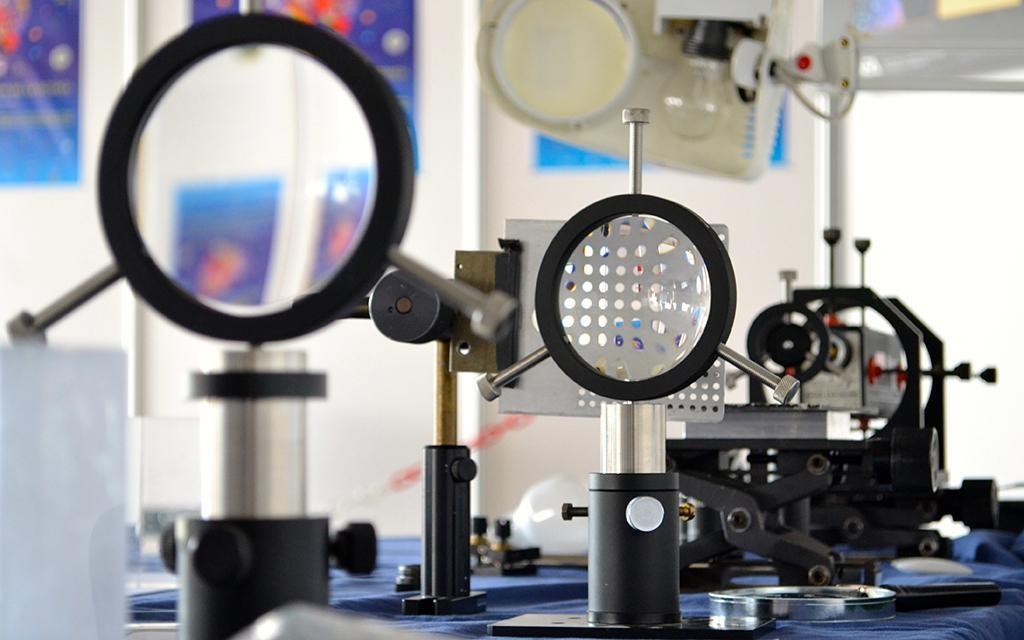
OTTICA E MISURA DEL TEMPO
REFERENTI:
D. Murra email ;
F. Flora email: f.
PUBBLICO: età 6-14 anni
EDIFICIO: A0 (visualizza la mappa - P2)
DURATA DELLA VISITA: 45 minuti
ORARI PER VISITA: 17:00 - 18:00 - 19:00 - 20:00 - 21:00 - 22:00
Questo percorso didattico è suddiviso in due postazioni che hanno come argomento la luce e la misura del tempo. Da una parte i ricercatori mostreranno cos’è la luce, come si genera, come si propaga, i suoi effetti e le applicazioni. I visitatori potranno vedere come e perché una lente ingrandisce gli oggetti, come funziona un telescopio o un obiettivo fotografico, perché si usano le fibre ottiche e gli occhiali polarizzatori. E non mancheranno le magie e gli effetti speciali che si basano sulle proprietà della luce e dell’ottica geometrica, come gli oggetti invisibili, le stanze deformanti o le illusioni ottiche. Nella seconda postazione la luce è ancora protagonista, in questo caso quale mezzo per la misura del tempo. Dall’epoca dei babilonesi fino ad oggi, lo scandire del giorno e della notte è stato alla base della vita e la conoscenza precisa del tempo è sempre stato un obiettivo degli scienziati di ogni periodo storico. Tutti sanno che è mezzogiorno quando l’ombra di un palo diventa minima, ma la misura del tempo nell’arco di tutta la giornata richiede la conoscenza esatta di come si muove la Terra, come è inclinato il suo asse e dove si trova il Nord. Noto tutto questo è possibile realizzare un ‘orologio solare’ meglio noto come meridiana. I visitatori vedranno come sia possibile costruire una meridiana ‘da viaggio’ e come, rovesciando il principio dell’orologio solare, sia possibile conoscere la direzione del polo Nord con la massima precisione possibile.
This educational path is divided into two sectors based on the light and the measure of time. On the one hand, researchers will show what light is, how it is generated, how it propagates, its effects and applications. Visitors will be able to see how and why the objects seen through a lens increase their size, how a telescope or photographic lens works, why optical fibers and polarizing glasses are used. There will be also magic and special effects based on the properties of light and geometric optics, such as invisible objects, deforming rooms or optical illusions. In the second sector the light is still the protagonist, in this case as a means for the measurement of time. From the time of the Babylonians until today, the succession of day and night has been the basis of life and the precise knowledge of the daytime has always been a goal of scientists of every historical period. Everyone knows that it is noon when the shadow of a pole becomes minimal, but the measurement of time during all the day requires the exact knowledge of how the Earth moves, how its axis is tilted and where the North is located. When this is known, it is possible to build a 'solar clock', better known as sundial. Visitors will see how it is possible to realize a 'travel' sundial and how, by reversing the principle of the solar clock, it is possible to know the direction of the North Pole with the highest possible precision.



